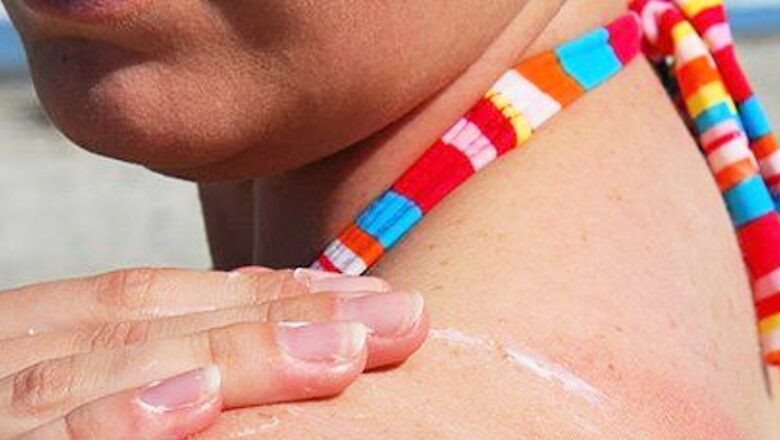
views
The use of sunscreen can help shield the body from the harmful effects of UV radiation. Skin cancer and early skin ageing are examples of these impacts. Today, there are many different sunscreen alternatives.
Some people may develop skin sensitivities while using certain sunscreen chemicals. These allergies may result in symptoms like swelling, itching, and redness of the skin.
Allergy to sunscreen causes
Some people may experience allergic responses to certain chemicals in sunscreen. The ingredients most likely to result in an allergic reaction include a few.
Benzophenones \Cinnamates \ Dibenzoylmethanes
Additionally, some people may be allergic to or sensitive to the scents and preservatives that sunscreen producers frequently use. When testing a new sunscreen, it’s a good idea to use a patch test, just like with any other new skin care product. You should complete this at least a day or two beforehand.
ALSO READ: Why It’s Still Crucial to Use Sunscreen in the Winters
Types of sunscreen
Chemical and physical sunscreens are the two basic categories. Physical sunscreens contain minerals like zinc oxide and titanium dioxide that reflect or scatter UV rays, whereas chemical sunscreens absorb UV radiation and stop them from reaching the skin.
Various skin reactions
People who are allergic or sensitive to sunscreen may develop one of three types of contact dermatitis.
- Irritant contact dermatitis: Those with sensitive skin or skin diseases like eczema are more susceptible to get this type of dermatitis.
- A person who is allergic to a certain sunscreen component develops allergic contact dermatitis.
- When sunscreen comes into touch with UV light, a type of allergy known as photoallergic contact dermatitis may develop.
ALSO READ: A Dermatologist’s Guide to Wearing Your Sunscreen Right
Symptoms
A sunscreen allergy may manifest right away after using sunscreen or it may take some time to manifest.Some signs include:
- Skin swelling or crimsonness
- Stinging or itching
- Hives or raised lumps
- Bleeding or scaling
- Rash or lesions with fluid in them
- People who already have skin diseases like xerosis, eczema, or psoriasis are more likely to develop an allergy to sunscreen.
Treatment
If a sunscreen causes a slight allergic response, it should be removed by washing the skin with lukewarm water. After that, they should avoid the sun until the skin has fully recovered. A parent or other adult can moisturise the skin if a child experiences a moderate allergic response by dabbing petroleum jelly over the afflicted area.
For skin sensitivities ranging from mild to severe:
- Cold compresses can lessen the discomfort and swelling
- Calamine lotion or petroleum jelly are two examples of skin moisturisers.
- Antihistamines for itch management
- Antibiotics and topical corticosteroids to treat secondary infections and lessen skin inflammation.
ALSO READ: Mineral vs Chemical Sunscreen Lotions: Know What to Use For Skin Care
A doctor should be seen if a sunscreen allergy occurs frequently or becomes serious. A dermatologist can assist by identifying and treating the skin condition. They may also make recommendations regarding the usage of sunscreen and sun exposure. The allergist will try to identify the substances causing the allergy and may be recommended by the doctor.
Read all the Latest Lifestyle News here




















Comments
0 comment